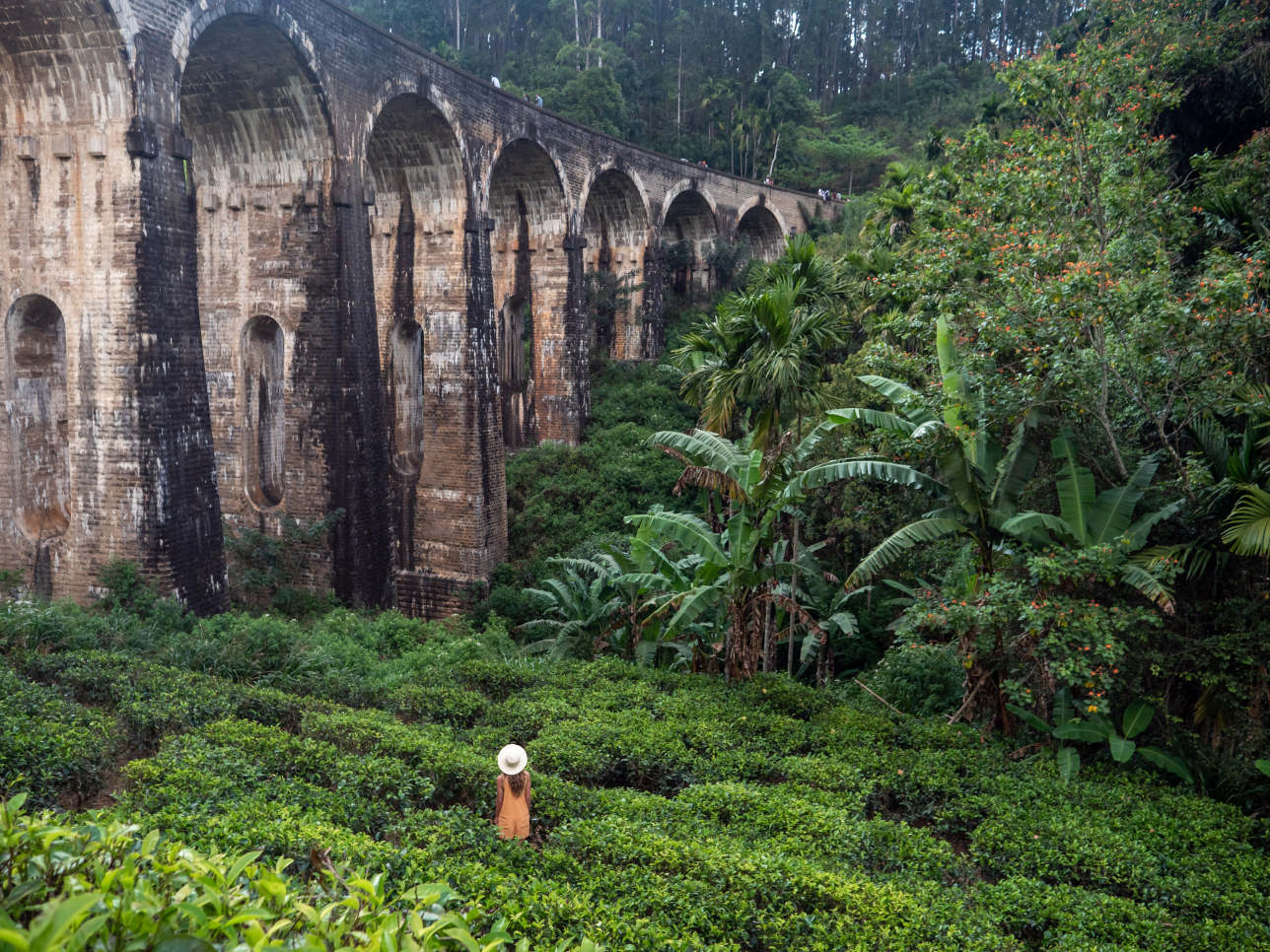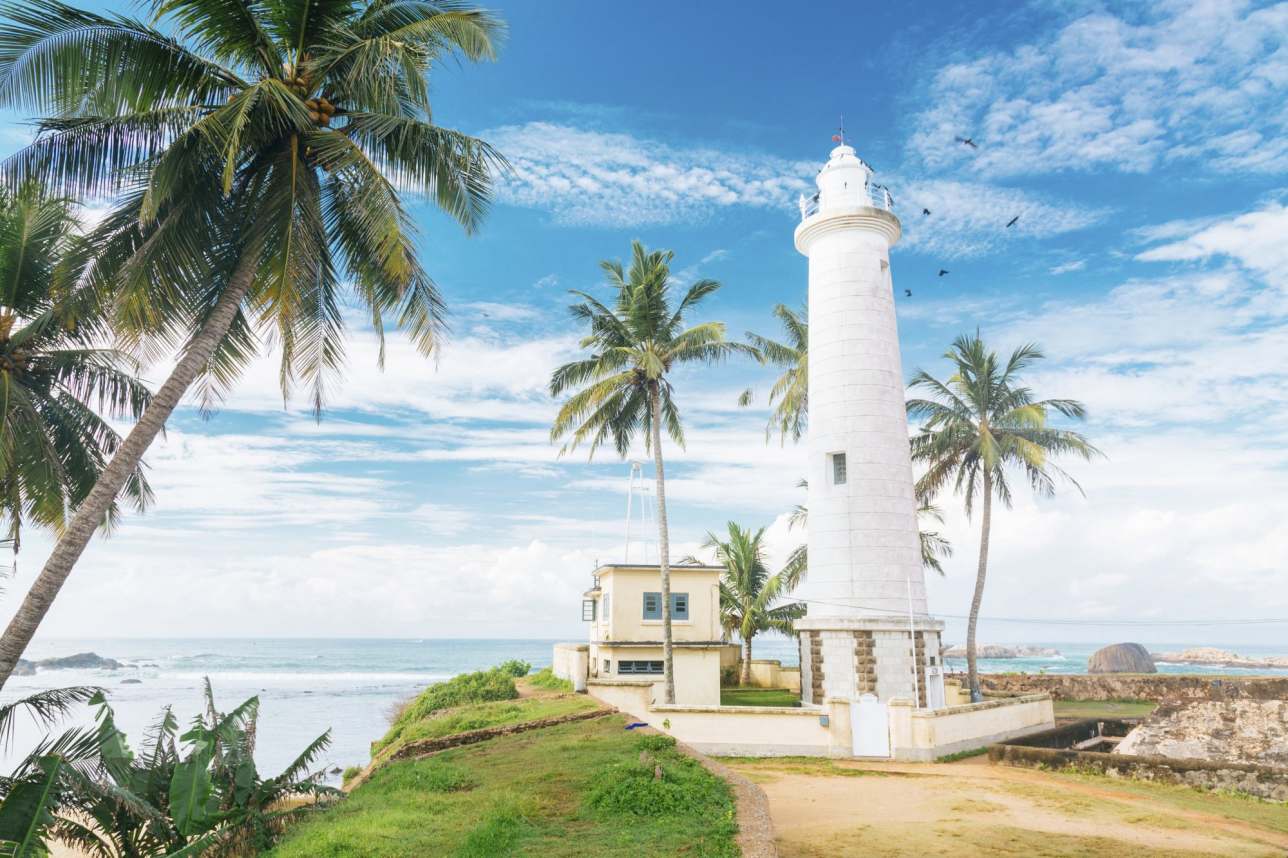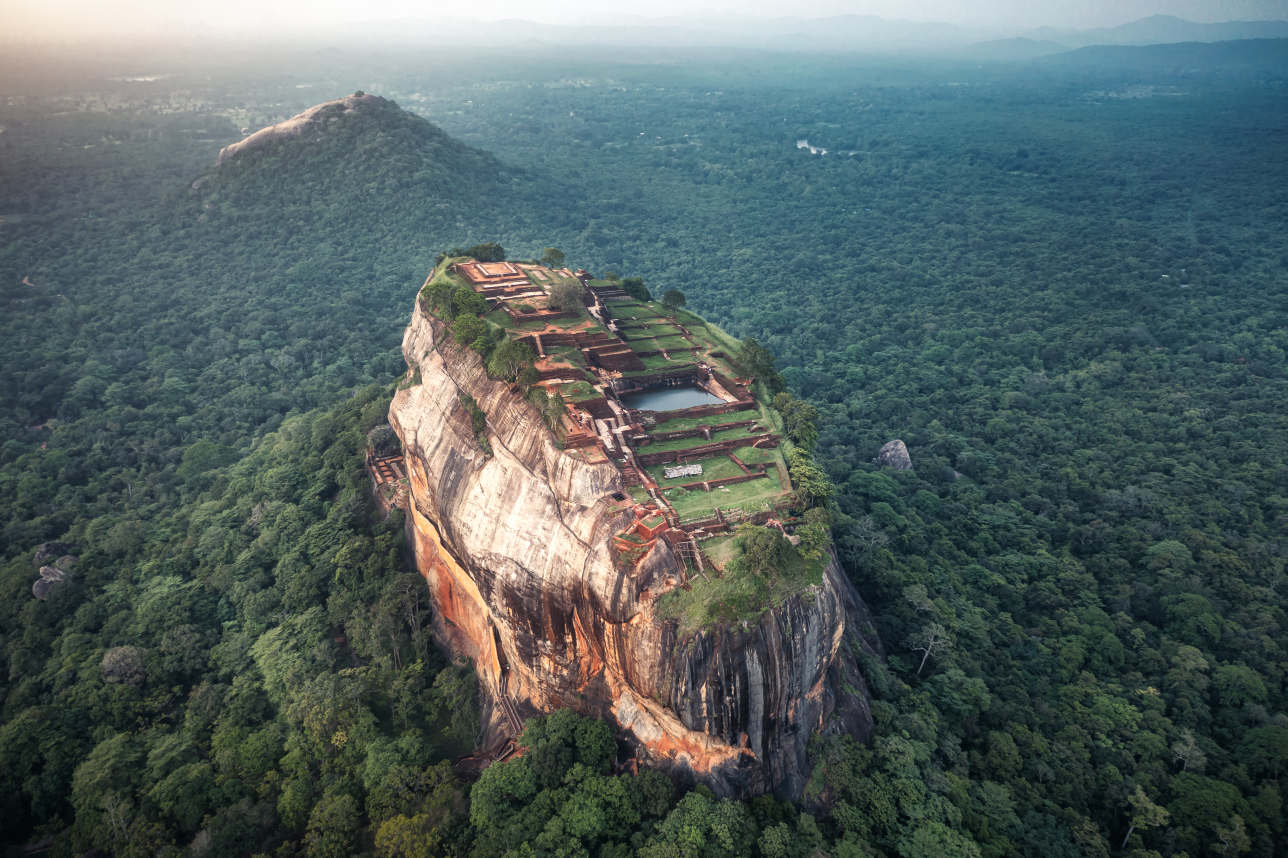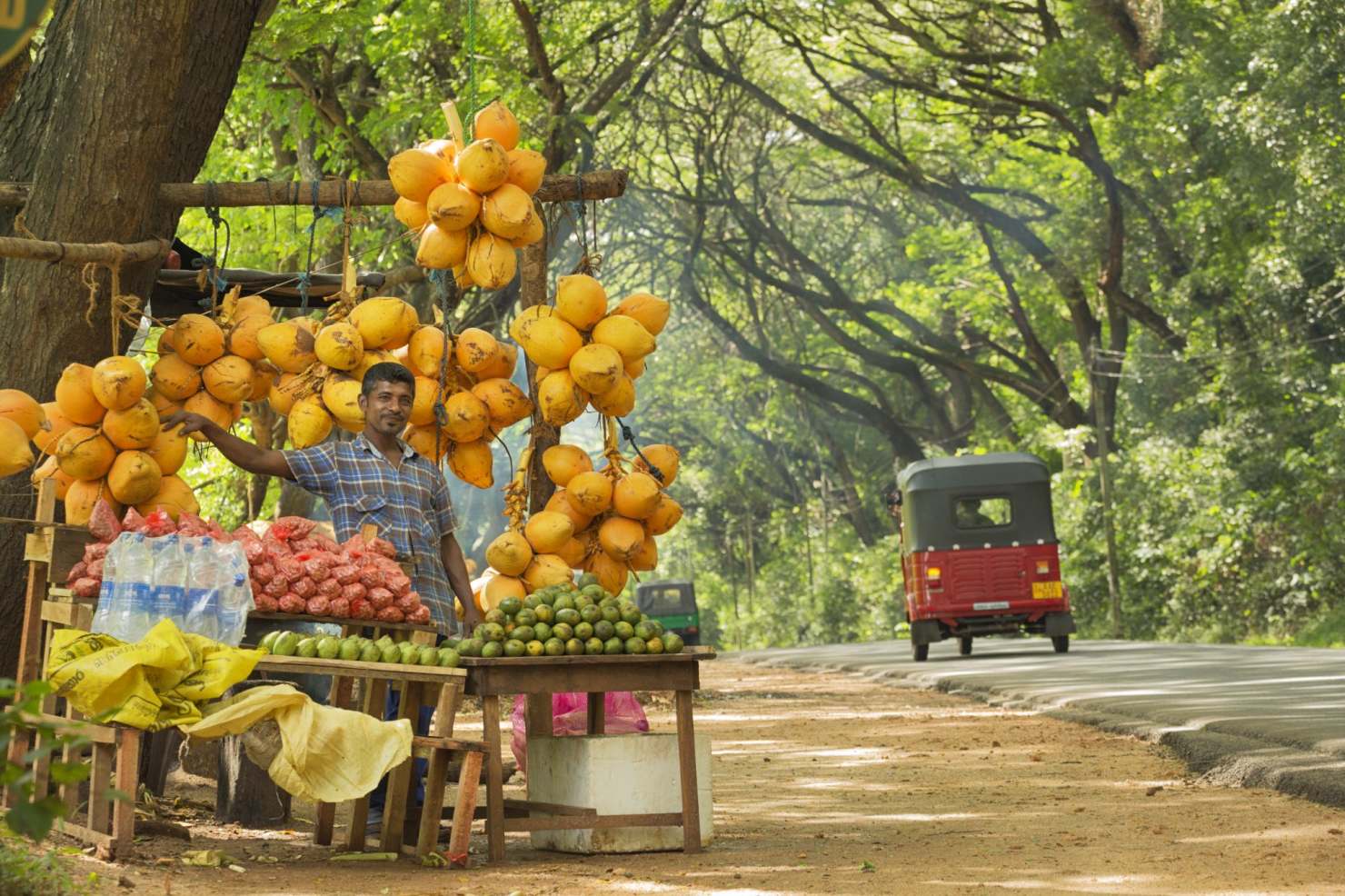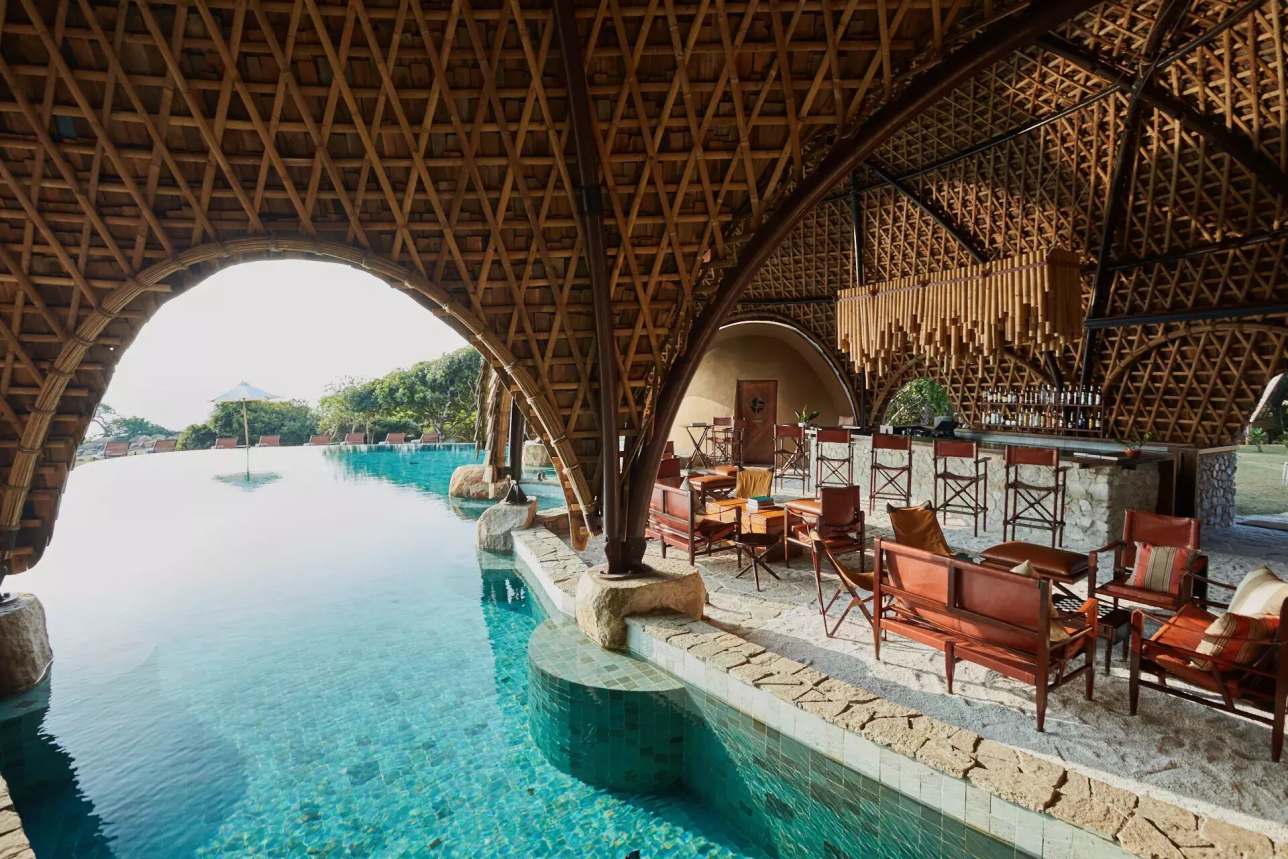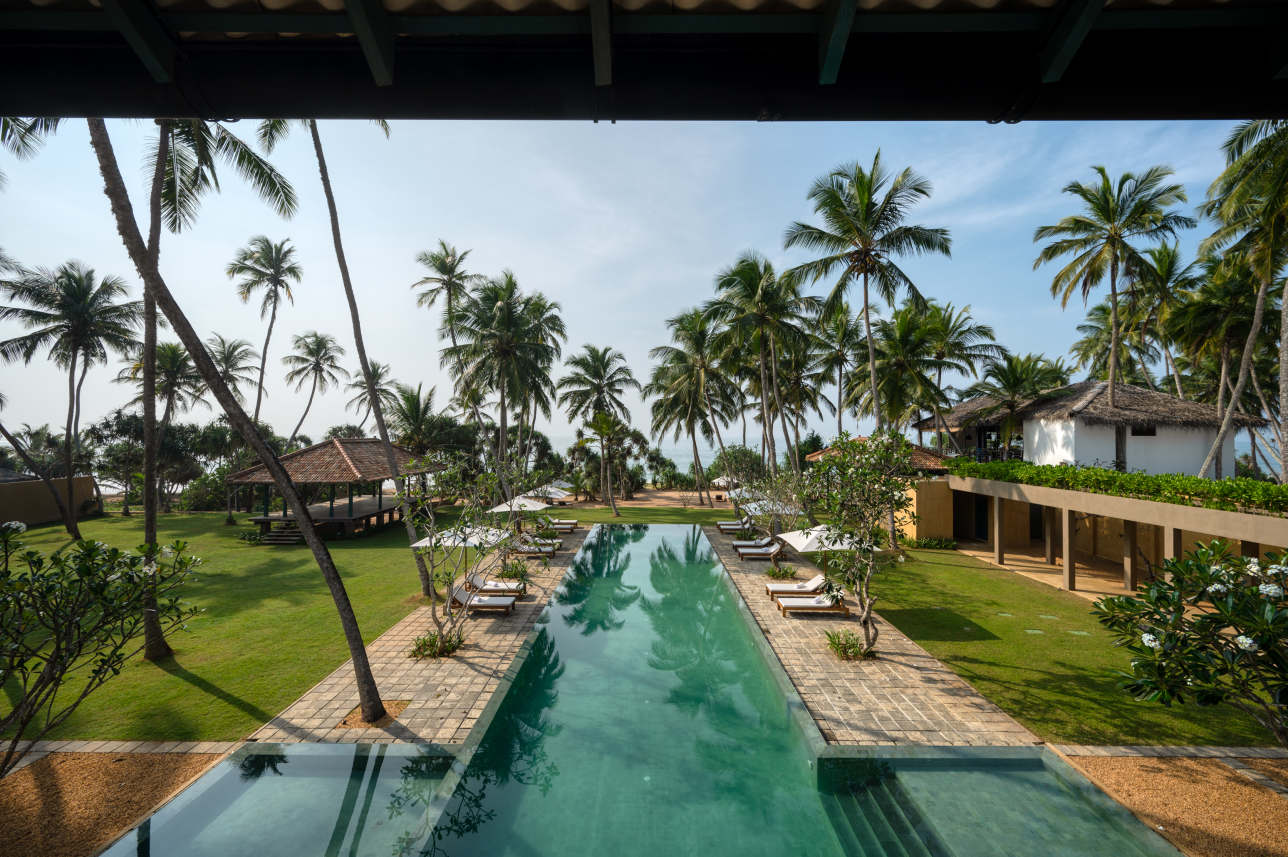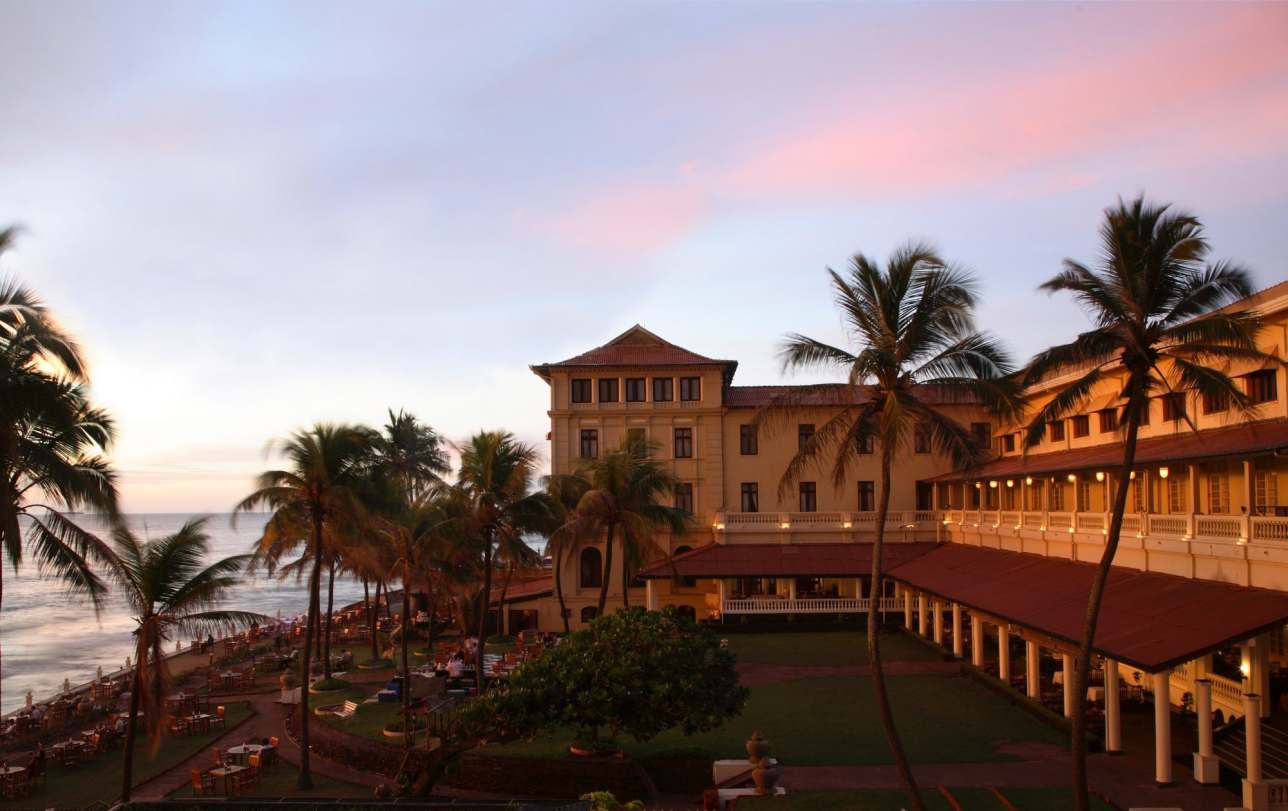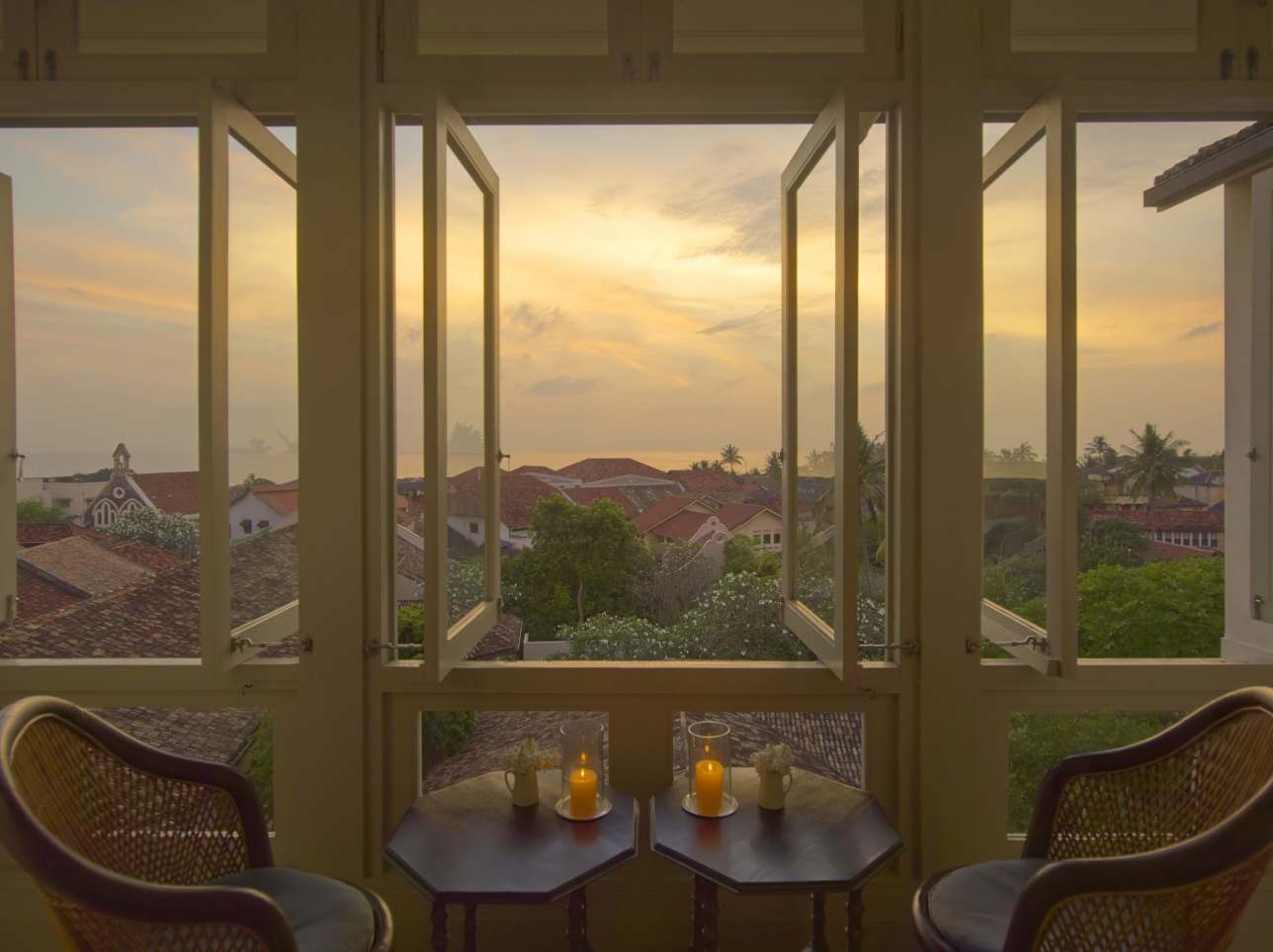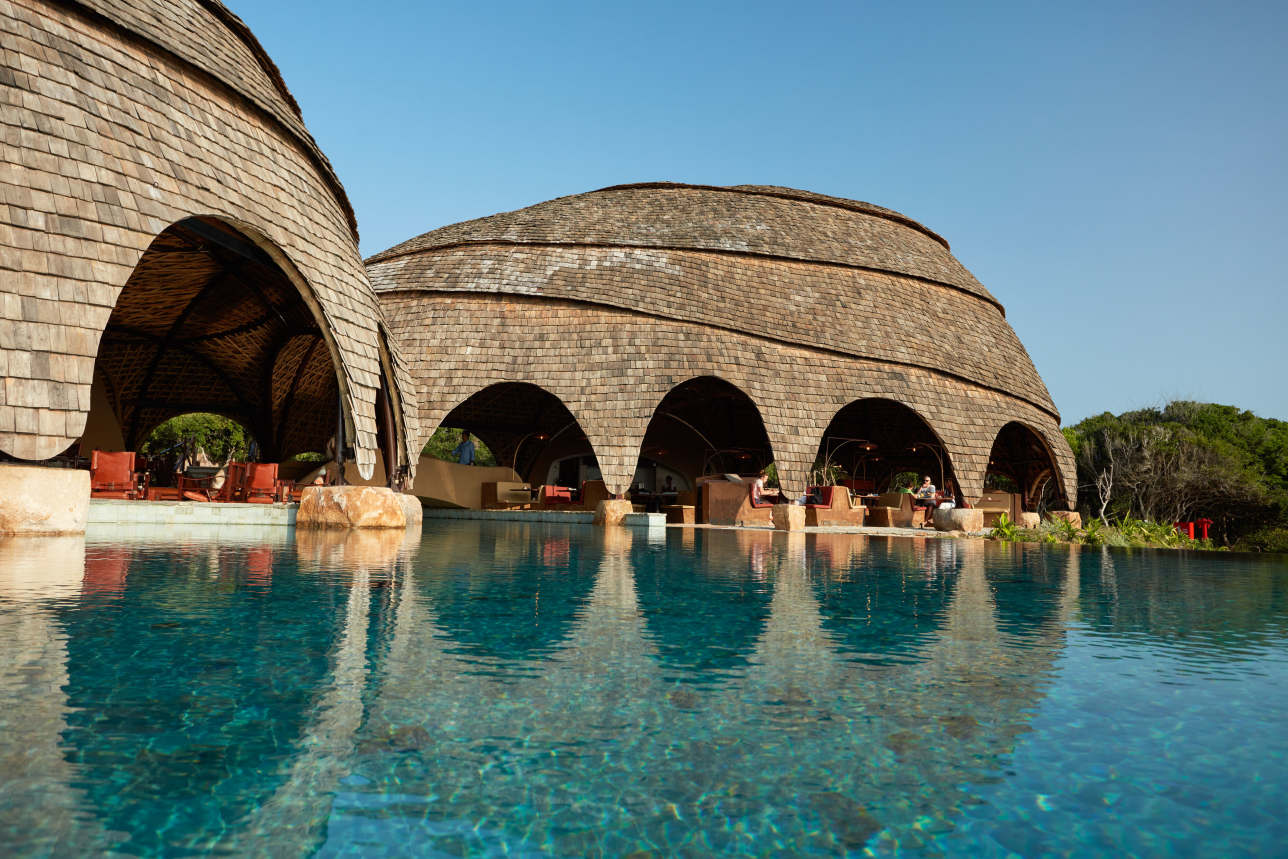Why you should visit this undersold, teardrop-shaped island right now – By Lee Tulloch
Source : smh
If there’s a country that could do with a lot of love right now, it’s Sri Lanka.
Over the past three decades, the island nation has been ravaged by conflict and disaster, beginning with the devastating 2004 Indian Ocean tsunami, which claimed 30,000 lives, and the 26-year-long civil war, which ended in 2009.
It had just re-emerged as a popular tourist destination when, on Easter Sunday 2019, an Islamic group, in retaliation for the Christchurch attacks thousands of kilometres away, bombed three churches and three luxury hotels in Colombo, unnerving the tourists who had returned in record numbers.
And then in 2020 there was COVID-19. Even though Sri Lanka managed it well, the world shut down. Shopkeepers in Galle Fort, the beautiful, fortified 17th-century village on the south-west coast, say they closed their stalls for two years and are only just starting to get back on their feet. Some expats, mostly Brits, went back home, dismissing their staff and shuttering their houses. Hotel workers went back to their villages.
But most Sri Lankans agree that last year’s political and economic crisis, although short-lived, has been the most damaging event of all for tourism. Scenes of long lines at petrol stations, protesters storming the Presidential Palace and gathering on Galle Face green in huge numbers to oppose years of economic mismanagement and corruption, gave the impression that the country had erupted in chaos.
Affluent travellers stayed away, concerned that they’d be taking essential resources from Sri Lankans if they visited.
It was inflation, not shortages of food or power, which spiked the crisis, says Malik Fernando, managing director of Resplendent Ceylon, the hospitality arm of the Dilmah Tea Company, which owns Tea Trails. “There were initial fuel shortages in March and April, which were resolved soon after, and there was black marketeering, which was quickly addressed.
“All of that is now much better. There have been safety valves extended, cash handouts and it’s a lot more organised approach that is now being deployed by a far more competent government than before.”
“I lived in Colombo during the whole crisis, and never once did I feel unsafe,” says Henry Fitch, chief executive of Teardrop Hotels, a collection of boutique hotels in heritage buildings. The protests were peaceful, he says, involving art installations and fairs on the green, and even tourists joined in. A small group of political agitators created a different impression, which made many potential visitors nervous. He doesn’t blame them. “People just want an easy trip that’s not going to be disrupted in any form.”
Everyone wants you to know Sri Lanka is open for business. With the ruling family, the Rajapaksas, exiled, many see it as an opportunity for a reset. “It was a much-needed wake-up call,” says Fernando. “Those who are still inclined to rob don’t have the space to do that. There is much less tolerance.” More importantly, the Sri Lankan people have found their voice.
And a more welcoming place for visitors is hard to imagine.
The complete package
This is my third visit to the tear-drop-shaped country of 22 million people, which lies just 35 kilometres across the Gulf of Mannar from India. I was there when it first opened up after the civil war, in the years before COVID-19 when it had become a hot destination, and this April, a few months after the economic crisis.
Each time I go I’m astounded by the country’s natural beauty and diversity, which ranges from hilly tea plantations to leopard-roaming jungles and underpopulated beaches lapped with the warm clear water of the Indian Ocean.
It remains mostly unspoiled when you get away from a few hot spots – a land of empty beaches, rice paddies and lily ponds, the overgrown ruins of ancient civilisations through which you can wander without crowds. Buddhist temples and stupas arise from the jungle and there are mountains, tea plantations, ladies shaded by parasols as they walk, schoolgirls with impeccable braids and friendly villagers who’ll always stop and chat. Despite a new port and industrial complex in the south-west and high-rise hotel developments in Colombo, it still feels like yesteryear.
“Being close to India, people think we are part of India,” says Harshana De Alwis, of Amangalla, the Aman resort hotel in Galle Fort. “We’re the opposite.” It is true that Sri Lanka is like India on Valium. Even the traffic is laid-back. One thing I noticed this time is that drivers rarely use their horns. The biggest worry on the highways seems to be beautiful birds – the roads are marked with cautionary signs reading “Danger, Peacocks Ahead.”
The roads were poor the first time I visited, but in recent years the Chinese have collaborated on new highways, or “carpet”, which can take you relatively quickly from beach to tea country, from the capital Colombo to the jungles of the east. It’s a shock this time to come across some of the interchanges, where tangles of roads interconnect. But even the motorways are colourful, passing through rainforest dotted with temples and the edges of villages where people dry their clothing on roadside bushes.
Visitors might be slowly filtering back, but it is still quiet in most places we travel. The exception is Galle Fort, which has been discovered by the Russians, who some hoteliers tell me have come to Sri Lanka to get far away from Putin’s war in Ukraine to avoid military subscription. They also have a penchant for well-known surfing town Hikkaduwa, which is Sri Lanka’s version of Kuta Beach.
The shopkeepers in Galle Fort greet me with “Are you Russian?” When I tell them “Australian” many will tell you they have family members here, have studied here, or are trying to get visas to study.
Signs of the economic crisis are minimal. There’s a QR code system in place for petrol and a rationing scheme that seems to work.
Sri Lankans are modest, proud and there are few beggars. But there’s no doubt people are doing it tough. An old woman sitting on a verandah in Galle Fort sells me handmade cards which she says will help her raise the money she needs for medicine for her diabetes. Five cards equal one injection. With inflation, small amounts of cash are meaningful to Sri Lankans and generous tourists can make a difference.
Natural abundance is all around. The village markets are bursting with colourful vegetables, ripe fruit and locally caught fish. The Sri Lankan cuisine is sensational – fresh, clean, flavourful, drawing on spices such as the prized Ceylon Cinnamon grown in plantations in the south-west.
From inexpensive roadside roti carts and home cooking-style restaurants, such as the original Mama’s in Galle Fort; to lobster curries and kottus at high-end resorts where the chefs have often done stints in Dubai or the Maldives, there’s a kaleidoscope of colourful choices, resourced locally.
And sometimes you come across something unexpectedly wonderful, such as Smoke & Bitters, a “sundowner shack” and outdoor dining spot at dreamy Hiriketiya beach in the south, which has been named in Asia’s 50 Best Bars 2022. On sloping lawns under palm trees where monkeys gambol, diners sit in open huts or at long tables blissing out on cheap, beautifully concocted cocktails, jackfruit biryani and smoky pork shoulder on roti.
Get a small (and beautiful) room
“I think our country is so badly undersold,” says Malik Fernando. “People just think it’s a backpacker or cheap destination.”
After the country opened up in 2009, the colonial-era architecture drew hoteliers and expats to the regions, where abandoned or languishing villas were transformed into small luxury hotels and resorts that are among the best in the world. While the deflated rupee and low cost of living means that it’s a cheap destination for food, transport and everyday items, hotels tend to charge in US dollars.
Things are starting to warm up again on the hotel scene again after a period of very low occupancy. In Colombo, the Cinnamon Life Integrated Resort, a new complex of residential towers, shopping mall and 800-guestroom hotel, is set to open in August. Dominating the waterfront with a glitzy, mirrored jigsaw facade, it’s the sort of monolith that Sri Lanka has so far avoided.
I prefer the sort of accommodation Sri Lanka does so well, historic boutique hotels like Wallawwa, the world’s best “airport hotel” in my opinion, set an 18th-century manor house and gardens 20 minutes from Colombo Bandaranaike airport. It’s a perfect place to recharge before or after your flight. It’s part of Teardrop Hotels, which has seven small hotels such as Fort Bazaar in Galle Fort and Nine Skies near Ella in the tea country.
Most anticipated this year has been the launch of the Reverie collection, from Resplendent Ceylon, the hotel arm of the Dilmah Tea Company, which owns upscale properties Tea Trails, Cape Weligama and Wild Coast Tented Lodge, long benchmarks for luxury hospitality in Sri Lanka.
Two hotels in the collection have opened so far. Ahu Bay sits on a point between two gorgeous beaches at Ahungalla and Kayaam House on a long stretch of pristine coast near remote Tangalle. Both are small, contemporary properties with a strong emphasis on design, wellness and fine dining but at a lower price than the Resplendent hotels. They’re sexy and highly Instagrammable. More hotels will join the collection, including Kilbourne near Ella next year and a tree-house hotel in the Cultural Triangle a little later.
One problem hotels face is the loss of skilled hospitality workers due to the devaluation of the rupee. They’re leaving for bigger salaries in the Maldives or Dubai and on cruise ships. “Our people are genuinely hospitable, and they’re authentic,” says Fernando. “You might find some waitstaff at properties are cheerful, enthusiastic, genuine, but they may not be hyper-efficient. Travellers would pardon that because they’re generally trying and smiling.”
According to Harshana de Alwis, “Sri Lankans are very resilient and whatever hardships they have they will never sacrifice the need to help other people. Whatever crisis hits Sri Lanka, it rebounds.”
As Sri Lanka comes back resoundingly, there has probably never been a better time to visit.
Lee Tulloch was the guest of Resplendent Ceylon and Amangalla.
Must knows before you go
To enter Sri Lanka, you’ll need an electronic travel authority, which is easily and quickly processed online.
COVID vaccine certificates are not required and there are no COVID restrictions.
Remember Even though it’s laid-back, Sri Lanka is a conservative society. It’s illegal, for instance, to be photographed with Buddhist statues while wearing skimpy clothing. Away from beaches it’s best to be modest and low-key.
Tipping is very much appreciated, although not compulsory. Inflation means the rupee is very weak against most currencies. Please be generous. Exchange your cash at the airport or at ATMs, which are never far away. The hardest thing is getting used to dealing with denominations in the tens of thousands.
Five hotels for the wish list
Galle Face Hotel
This rambling, majestic pile, opened in 1864, is one of the oldest hotels in South Asia and sits on the coast in Colombo, fronting the kilometre-long green known as Galle Face. While it retains its authentic colonial splendour, it has been impeccably restored and refurbished in recent decades. It’s the social heart of Colombo and the famous Travellers Bar has hosted writers such as Mark Twain and Arthur Conan Doyle. Visit gallefacehotel.com
Amangalla
Occupying a key position within the walls of the 17th-century Dutch fort in Galle, Amangalla is the fort’s premium hotel, in the heritage building that was formerly The New Oriental Hotel, established in 1865 for globetrotting P&O passengers. It’s one of Aman Resorts’ finest hotels, beautifully restored and luxuriously appointed, with sublime butler service, an Ayurvedic focused spa and a shady garden pool that’s a true oasis. Afternoon sundowners are taken with a view over the roofs of the fort. aman.com/resorts/amangalla
Tea Trails
This exceptional collection of restored heritage planter’s residences includes five heritage bungalows dotted among tea plantations in the hill country. A Relais & Chateaux property, Tea Trails harks back to the genteel aspects of Sri Lanka’s colonial history, with butlers delivering breakfast tea in bed, sumptuous afternoon tea service and gourmet meals, croquet lawns and garden-set swimming pools. For a spectacular arrival, take the seaplane and land on tranquil Castlereagh Reservoir. Visit resplendentceylon.com/teatrails
Wild Coast Tented Lodge
This oceanfront lodge sits on a wildly beautiful beach within the Yala National Park. It’s not uncommon to see an elephant on the sand or spot a leopard in the foothills. (You’re not allowed to venture out at night without a guide.) Guests stay in stylish safari-retro cocoons with their own plunge pools. Safaris into the park are the thing here, but there are also plenty of resort activities, such as nature walks, cooking classes, and wilderness dining. Kids will love it. Visit resplendentceylon.com/wildcoastlodge-yala
Lunuganga Country Estate
Geoffrey Bawa was one of Sri Lanka’s most significant and influential architects and his artist’s retreat is now a beautiful small hotel set in a five-hectare garden near the south coast resort town of Bentota. Rooms include Bawa’s original master suite, a light-filled glass house or his former gallery. The exquisite garden and lake have long been a destination in themselves. Visit teardrop-hotels.com/lunuganga
Five must-visit highlights
Yala National Park
Teeming with incredible biodiversity, the Yala National Park is home to the largest population of leopards in Sri Lanka, plus wild elephants, spotted deer, sloth bears, jackals, boar, crocodiles, monkeys and 135 species of migratory birds. Visitors can pre-book half-day or full-day safaris for up to six people from $US40 ($60.75) a person. Visit yalasrilanka.lk
Sigiriya Rock Temple
This ancient palace sits atop a monumental rock that rises out of the jungle 180 metres high. Built by King Kashyapa in the fifth century AD, the palace once had an enormous gateway shaped like a lion, of which one giant paw remains. Those climbing the 1200 steps to the top of the UNESCO-listed rock are treated to beautiful frescoes of maidens that remain along its western face. Visit sigiriyafortress.com
Kandy
This bustling city in central Sri Lanka sits on a beautiful lake, surrounded by mountains, tea plantations and rainforest. Its number one tourist attraction is the golden-roofed Temple of the Sacred Tooth Relic, Sri Lanka’s holiest shrine. But there’s lots more to see, from lovely botanic gardens to the market streets of the old town. The Festival of Perahera in August is famous for its grand procession of elephants. Visit whc.unesco.org
Anuradhapura
The ancient capital of Sri Lanka was the seat of government for 1400 years under 130 kings but was abandoned in 993. Established around a cutting from the Buddha’s tree brought there in the third Century AD, Anuradhapura’s palaces, monasteries and religious monuments were concealed in dense jungle for millennia until excavations began in the 1800s. The sprawling, UNESCO-listed complex of ruins has the emotional impact of Angkor Wat, but with fewer tourists. Visit whc.unesco.org
Galle Fort
Portuguese spice traders founded this small fort on the south-west coast of Sri Lanka in the 16th century. Later, the Dutch conquered it and created a grid of streets lined with charming colonial houses and shops. These days, the fort, which is protected by high ramparts and a picturesque light house, is a beacon for its architecture, boutique hotels, stylish fashion and homewares shops, and restaurants and bars. Visit gallefort.lk


